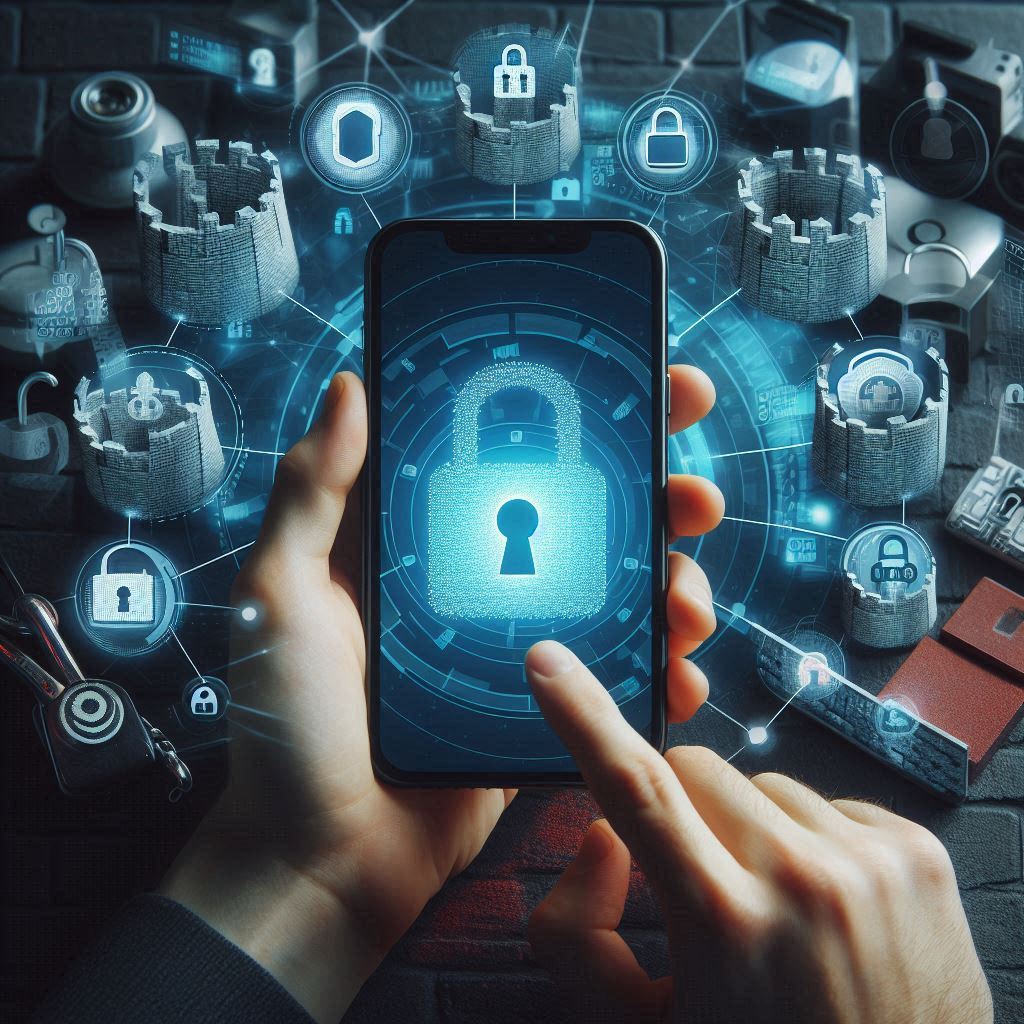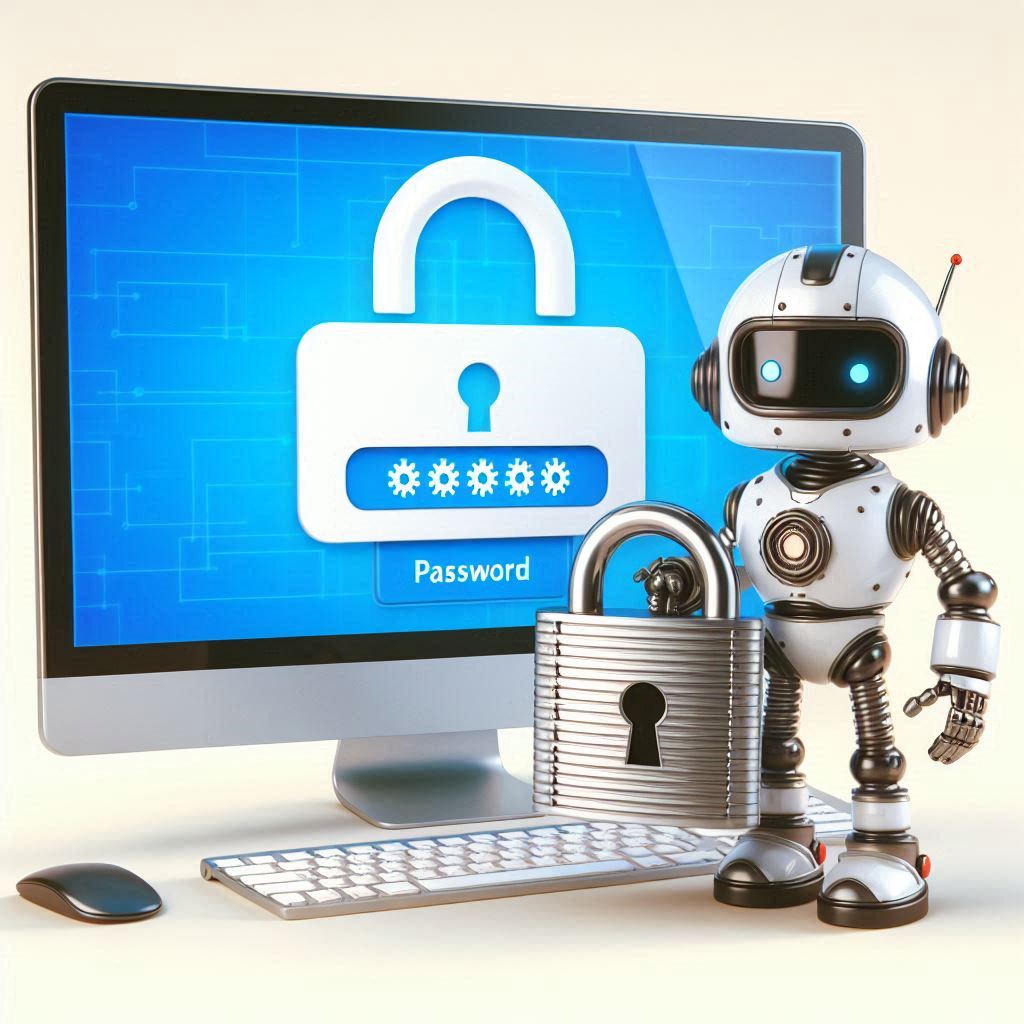
This comprehensive guide will walk you through the fundamentals of cybersecurity and provide you with the knowledge and tools to safeguard your online presence.
Understanding Cybersecurity
Cybersecurity refers to the practice of protecting systems, networks, and programs from digital attacks. These attacks are usually aimed at accessing, changing, or destroying sensitive information, extorting money from users, or interrupting normal business processes. As technology advances, so do the methods and sophistication of cyber threats, making it crucial for individuals and organizations to stay informed and prepared.
The Importance of Cybersecurity
The digital landscape is fraught with risks, from identity theft and financial fraud to large-scale data breaches affecting millions. Understanding and implementing proper cybersecurity measures is not just a technical necessity but a fundamental aspect of modern life. Here's why cybersecurity matters:
- Protection of Personal Information: Your personal data, including financial details, medical records, and private communications, are valuable targets for cybercriminals.
- Financial Security: Cyber attacks can lead to significant financial losses for individuals and businesses alike.
- Reputation Management: A security breach can severely damage personal and professional reputations.
- National Security: Cyber attacks can target critical infrastructure, potentially affecting entire nations.
- Business Continuity: For organizations, cybersecurity is crucial to maintain operations and protect sensitive corporate data.
Common Cyber Threats
To effectively protect yourself, it's essential to understand the types of threats you might face. Here are some of the most common cyber threats:
1. Malware
Malware, short for malicious software, is any program or file that is harmful to a computer user. Types of malware include:
- Viruses: Programs that replicate and spread to other computers.
- Worms: Self-replicating malware that spreads without user interaction.
- Trojans: Malware disguised as legitimate software.
- Ransomware: Malware that encrypts files and demands payment for decryption.
- Spyware: Software that secretly monitors user activity.
Example:
- Fireball: An adware that infects computers, hijacks browsers, and inserts annoying ads into web pages.
- TrickBot: A trojan that steals financial data and has evolved to perform various illegal online activities.
2. Phishing
Phishing is a type of social engineering attack often used to steal user data, including login credentials and credit card numbers. It occurs when an attacker, masquerading as a trusted entity, dupes a victim into opening an email, instant message, or text message.
Example:
- Text message requesting money: "Hello, regarding the COVID19 pandemic, the State allocates 350-700 euros to its citizens...
- Email with attention-grabbing subject: "Suspicious movements", "You have received a notification", "You have a package waiting".
3. Man-in-the-Middle (MitM) Attacks
MitM attacks occur when attackers insert themselves into a two-party transaction. Once the attackers interrupt the traffic, they can filter and steal data.
Example:
- An attacker intercepts communication between a user and their bank's website, stealing login credentials and financial information.
4. Denial-of-Service (DoS) Attacks
DoS attacks flood systems, servers, or networks with traffic to exhaust resources and bandwidth. This overwhelms the system and prevents legitimate requests from being fulfilled.
Example:
- The Mirai botnet attack in 2016 that left much of the US East Coast without internet access by overwhelming servers with traffic.
SQL Injection
SQL injection is a code injection technique used to attack data-driven applications. It involves inserting malicious SQL statements into entry fields for execution.
Example:
- An attacker inputs malicious SQL code into a website's search box, tricking the database into revealing sensitive user information: UNION SELECT username, password FROM users--
Essential Cybersecurity Measures
Now that we understand the threats, let's explore the fundamental measures you can take to enhance your cybersecurity:
1. Use Strong, Unique Passwords
Your first line of defense is a strong password. Here are some tips:
- Use a combination of uppercase and lowercase letters, numbers, and symbols.
- Make your password at least 12 characters long.
- Use a unique password for each account.
- Consider using a password manager to generate and store complex passwords securely.
2. Enable Two-Factor Authentication (2FA)
Two-factor authentication adds an extra layer of security by requiring two different forms of identification before granting access. This typically involves something you know (like a password) and something you have (like a mobile device).
3. Keep Software Updated
Regularly update your operating system, applications, and antivirus software. These updates often include security patches for newly discovered vulnerabilities.
4. Use a Firewall
A firewall acts as a barrier between your trusted internal network and untrusted external networks, such as the internet. Both hardware and software firewalls can help prevent unauthorized access to your system.
5. Encrypt Your Data
Use encryption to protect sensitive data, both in transit and at rest. This ensures that even if data is intercepted, it remains unreadable without the decryption key.
6. Be Cautious with Email and Attachments
Email is a common vector for malware and phishing attempts. Be wary of unexpected attachments or links, even if they appear to come from known sources.
7. Use a Virtual Private Network (VPN)
A VPN encrypts your internet connection, making it more difficult for attackers to intercept your data, especially when using public Wi-Fi networks.
8. Regularly Back Up Your Data
Regular backups can help you recover your data in case of a ransomware attack or other data loss incidents. Keep backups in a separate, secure location.
Advanced Cybersecurity Techniques
As cyber threats evolve, so must our defense strategies. Here are some advanced techniques to further enhance your cybersecurity:
1. Network Segmentation
Network segmentation involves dividing a network into smaller parts. This can help contain breaches and limit the spread of malware within a network.
Example: Acme Corporation Network Segmentation
Acme Corporation implements network segmentation to enhance security and improve network performance:
- Finance Department Subnet:
- Restricted access to financial data and accounting systems
- Isolated from other departments to protect sensitive information
- Human Resources Subnet:
- Contains employee records and payroll systems
- Limited access to authorized HR personnel only
- Engineering Subnet:
- Houses development servers and project management tools
- Separated to protect intellectual property and ongoing projects
- Marketing and Sales Subnet:
- Access to customer relationship management (CRM) systems
- Isolated to safeguard customer data
- Guest Wi-Fi Network:
- Separate network for visitors and contractors
- No access to internal company resources
- IoT Device Subnet:
- Dedicated network for smart devices and sensors
- Isolated to prevent potential vulnerabilities from affecting core systems
2. Intrusion Detection and Prevention Systems (IDPS)
IDPS tools monitor network traffic for suspicious activity and can automatically take action to prevent or block potential threats.
Example: Suricata IDPS Implementation
Suricata is a popular open-source IDPS that combines both detection and prevention capabilities. Here's how it might function in a corporate network:
- Deployment: Suricata is installed at the network perimeter, monitoring all incoming and outgoing traffic.
- Traffic Analysis: Suricata continuously examines network packets using signature-based and anomaly-based detection methods.
- Threat Detection: The system identifies a series of failed login attempts from an external IP address, indicating a potential brute force attack.
- Automated Response: Suricata immediately blocks the suspicious IP address, preventing further login attempts.
- Alert Generation: The security team receives a real-time alert detailing the incident, including the attacker's IP and the targeted system.
- Log Analysis: Suricata logs the event for further investigation and potential pattern recognition of future attacks.
3. Security Information and Event Management (SIEM)
SIEM systems collect and analyze log data from various sources across your network to provide real-time analysis of security alerts.
Example: SIEM Implementation at Global Corp
Global Corp, a multinational company, implements a SIEM solution to enhance its cybersecurity posture:
- Data Collection: The SIEM system aggregates log data from various sources across Global Corp's network, including:
- Firewalls
- Intrusion Detection Systems (IDS)
- Antivirus software
- User authentication systems
- Application servers
- Real-time Analysis: The SIEM continuously analyzes the collected data using predefined rules and AI-powered algorithms.
- Threat Detection: At 2:15 PM, the SIEM detects a series of failed login attempts on a critical database server from an unusual IP address.
- Alert Generation: The system immediately generates a high-priority alert, notifying the security team of the potential brute-force attack.
- Automated Response: The SIEM automatically blocks the suspicious IP address to prevent further attempts.
- Incident Investigation: Security analysts use the SIEM's dashboard to correlate this event with other recent activities, discovering that the same IP had accessed several other systems in the past hour.
- Reporting: The SIEM generates a detailed report of the incident, including a timeline of events and affected systems, aiding in further investigation and compliance documentation.
4. Penetration Testing
Also known as ethical hacking, penetration testing involves simulating cyber attacks to identify vulnerabilities in your systems or networks.
Example: Target Corporation Data Breach Simulation
Target Corporation conducts a penetration test to assess its payment system security:
- Scoping: The company hires an external cybersecurity firm to simulate an attack on its point-of-sale (POS) systems.
- Information Gathering: Testers collect publicly available information about Target's network infrastructure and POS systems.
- Vulnerability Identification: The team discovers a potential weakness in the third-party vendor access to Target's network.
- Exploitation: Ethical hackers successfully breach the network through the vendor's credentials, mimicking the 2013 real-world attack.
- Access Maintenance: Testers demonstrate how attackers could maintain prolonged access to steal customer data.
- Analysis and Reporting: The penetration testing team provides a detailed report of the vulnerabilities found, including:
- Weak vendor access controls
- Insufficient network segmentation
- Inadequate monitoring of data exfiltration
- Remediation: Based on the findings, Target implements stronger access controls, improves network segmentation, and enhances monitoring systems.
Employee Training and Awareness
Human error is often the weakest link in cybersecurity. Regular training can help employees recognize and respond to potential threats.
Example: Cybersecurity Training Program: TechCorp Solutions
Scenario-Based Training Module
- Phishing Simulation Exercise
- Employees receive mock phishing emails
- Goal: Test ability to identify suspicious communications
- Tracking employee response rates
- Immediate feedback for those who click suspicious links
Interactive Training Components
- Quarterly mandatory cybersecurity workshops
- Online learning modules
- Gamified security awareness platform
- Real-world threat demonstration videos
Practical Training Scenarios
- Example 1: Email Phishing Test
- Fake email appears to be from IT department
- Requests urgent password reset
- Employees who click receive immediate training popup
- Those who report email get positive reinforcement
- Example 2: Social Engineering Simulation
- Actors attempt to gain unauthorized building access
- Test employee verification procedures
- Evaluate response to unexpected security challenges
Key Training Elements
- Recognizing suspicious email patterns
- Understanding social engineering tactics
- Proper password management
- Reporting potential security incidents
- Safe browsing practices
- Protecting sensitive company information
Measurement and Improvement
- Track employee performance metrics
- Continuous training content updates
- Personalized learning paths
- Annual security awareness certification
Cybersecurity for Mobile Devices
With the increasing use of smartphones and tablets, mobile device security has become crucial. Here are some tips specific to mobile security:
- Use Device Encryption: Most modern smartphones offer built-in encryption. Ensure this feature is enabled.
- Be Cautious with App Permissions: Only grant apps the permissions they need to function.
- Avoid Public Wi-Fi: If you must use public Wi-Fi, use a VPN to encrypt your connection.
- Keep Your Device Updated: Regularly update your device's operating system and apps.
- Use Remote Wiping Features: Enable features that allow you to remotely erase data from your device if it's lost or stolen.
The Future of Cybersecurity
As we look towards the future, several trends are shaping the cybersecurity landscape:
1. Artificial Intelligence and Machine Learning
AI and ML are being increasingly used to detect and respond to threats more quickly and efficiently than human analysts.
2. Internet of Things (IoT) Security
As more devices become connected, securing the IoT ecosystem is becoming a significant challenge and focus area.
3. Cloud Security
With the widespread adoption of cloud services, ensuring the security of data stored and processed in the cloud is crucial.
4. Quantum Computing
While still in its early stages, quantum computing has the potential to break many current encryption methods, necessitating the development of quantum-resistant cryptography.
5. Zero Trust Security Model
This model assumes no trust in any user, device, or network, requiring verification from everyone trying to access resources in a network.
Cybersecurity Best Practices for Businesses
While individual cybersecurity is crucial, organizations face unique challenges in protecting their assets and data. Here are some best practices for businesses:
1. Develop a Comprehensive Security Policy
Create and enforce a clear, comprehensive security policy that outlines procedures for handling sensitive data, using company devices, and responding to security incidents.
2. Implement Access Controls
Use the principle of least privilege, granting employees access only to the resources they need to perform their jobs.
3. Conduct Regular Security Audits
Perform regular assessments of your security posture to identify and address vulnerabilities.
4. Invest in Employee Training
Regularly train employees on cybersecurity best practices and how to recognize potential threats.
5. Have an Incident Response Plan
Develop and regularly test a plan for responding to security incidents to minimize damage and recovery time.
6. Consider Cyber Insurance
Cyber insurance can help mitigate the financial impact of a security breach.
Legal and Ethical Considerations in Cybersecurity
As cybersecurity becomes increasingly important, it's crucial to understand the legal and ethical implications:
1. Data Protection Regulations
Familiarize yourself with relevant data protection laws such as the General Data Protection Regulation (GDPR) in the EU or the California Consumer Privacy Act (CCPA) in the US.
2. Ethical Hacking
While penetration testing is a valuable security tool, it's important to obtain proper authorization before testing systems you don't own.
3. Privacy Concerns
Balance the need for security with respect for individual privacy rights.
4. Reporting Vulnerabilities
If you discover a vulnerability in a system or software, report it responsibly to the owner or developer.
Tips on SEO and Online Business
Next Articles
Previous Articles







